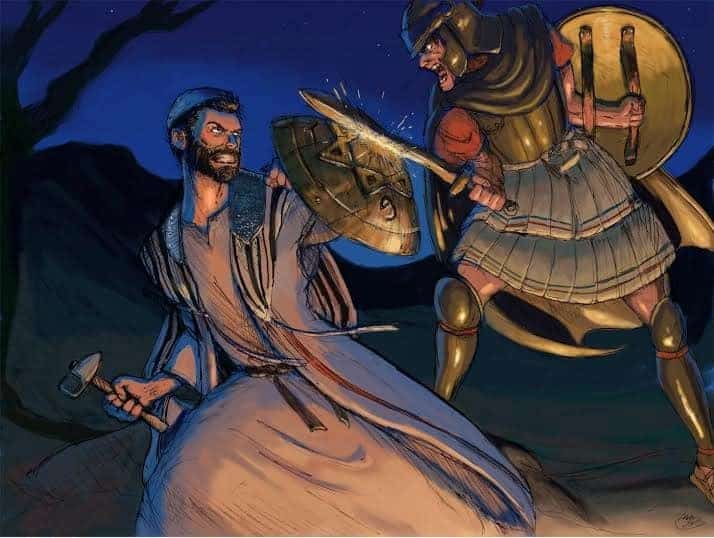The Jewish holiday of Hanukkah celebrates the rededication of the Holy Temple in Jerusalem during the Maccabean Revolt (167 BC – 160 BC) against the Seleucid Empire. During the first year of the revolt, the Maccabees won three spectacular victories against the invaders: Wadi Haramia, Beth Horon and Emmaus, and they followed up with a major win at the Battle of Beth Zur in 164 BC. Even today, the tactics of Judah, leader of the Maccabees, are studied as his simple, yet ingenious military approach yielded dividends.
The first three battles in the revolt took place in crucial Seleucid strongholds and the outcome of each gave the Maccabee forces real hope that the invaders would be permanently driven out of Jerusalem. Unfortunately for them, the Seleucids regained their composure and began to get the better of their enemy. Ultimately, the Seleucids ended the revolt at the Battle of Elasa in 160 BC where Judah was killed. However, the Battle of Emmaus remains as one of ancient history’s greatest military triumphs.

Background
After Alexander the Great died in 323 BC, his vast territories were up for grabs and the land of Israel was contested by the Seleucids of Syria and the Ptolemies of Egypt. During the second century BC, Antiochus IV Epiphanes, the Seleucid king, issued a series of religious decrees designed to impose Hellenism and eliminate sectarianism. Antiochus’ decrees also forbade Jewish religious practice. In 167 BC, a Jewish priest named Mattathias the Hasmonean refused to worship a Greek God and murdered a Hellenistic Jew who took his place when sacrificing an idol.
Along with his five sons, he fled to the wilderness but died soon after. One of his sons, Judah Maccabee, took the mantle of leader and began to garner support for the revolt against the Seleucids. The small but capable force of 600 men met an estimated 2,000 Seleucids under the command of Apollonius at the Battle of Ma’aleh Levona in 167 BC. Judah annihilated the enemy by ambushing them and according to legend, he personally killed Apollonius in hand-to-hand combat. Given the small size of the armies, it is likely that both commanders would have faced off at some point.

The embarrassed and angry Seleucids sent another army to fight the upstarts which led to the Battle of Beth Horon in 166 BC. The town is around 15 miles northwest of the city of Jerusalem and the Seleucid army of 4,000 men, commanded by Soron, marched there to confront Judah. By now, the rebel army was growing in strength but Judah could still only muster 1,000 troops. Even so, Judah used his knowledge of the terrain to prepare an ambush. While Soron expected this move, and spread out his force to counter, he was unable to prevent disaster as the Judean rebels destroyed Soron’s force and killed the commander.
It was already clear that Judah was utilizing guerrilla tactics to outmanoeuvre and surprise much larger enemy forces. The Seleucids used phalanx-based tactics which were becoming outdated. It resulted in their army moving extremely slowly which made it easy for Judah to pick them off. His lightning-fast militia caused havoc in the early part of the revolt and at the Battle of Emmaus in 166 BC, Judah used all his advantages to earn a stunning victory.

